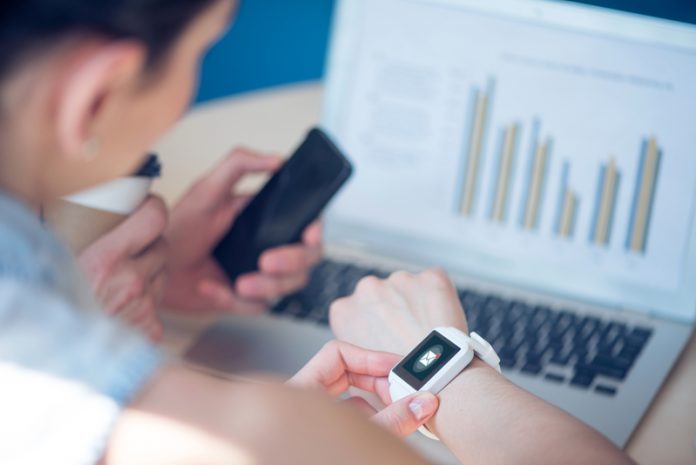With the international market for wearable devices having reached a new high in 2017 with 16.9% growth year on year, Instant Offices delves into what impact this trend will have on the workplace as we know it
Wearable tech is becoming a part of everyday life, with more and more people relying on devices like smartwatches and fitness trackers to help them make more informed lifestyle decisions. In fact, a recent survey from SHP revealed 45% of the UK workforce would feel comfortable with sharing information via wearable devices for the purpose of protecting their health and wellbeing.
In their top predictions for 2016 and beyond, the researchers at Gartner, Inc. forecasted that 2 million employees would soon be required to wear health and fitness trackers as a condition of employment.
Fitbit, Jawbone and Bellabeat have become household names, and forward-thinking employers have been keeping a close eye on the rising trend of wearable tech, however, employees have reported concerns about their employers knowing details of their lifestyle and the workplace discrimination as the outcome.
It is expected that employees in law enforcement and emergency response fields are most likely to have to monitor their health with wearables for safety’s sake. Others may include professional athletes, airline pilots and industrial workers.
Trends Improving Safety & Protection
The potential benefits of monitoring an employee’s heart rate, respiration and stress levels in a challenging work environment are evident. The requirement for wearable health trackers at work could help keep more people in better health, and could even save lives.
A few examples of wearable technologies emerging in the UK workplace are:
- A smartphone app and wristband for lone workers, which can be used as a discreet panic button or check-in tool.
- An ID badge for NHS workers, which can send a discreet audio call to a dedicated call centre in case of an emergency.
- A smart glasses system which allows workers in the field to video conference with experts in other fields.
Wearables have their benefits in more ‘ordinary’ office situations too. They could help boost staff wellness by addressing issues like fatigue and stress and by encouraging employees to exercise and take regular breaks.
Wearable Devices and IoT Security Threats
While these are exciting times for wearable tech developments, this trend obviously means a huge upsurge in IoT (Internet of Things) technologies being present in the workspace. This naturally comes with inherent security risks. In fact, research by Fujitsu shows that two out of three companies should expect to experience a significant IoT security breach in the coming year.
Know the Risks of IoT Wearables
ABI identifies ‘denial of service’ and ‘hardcore attacks’ as the two main threats to IoT devices. Denial of service is a service disruption that’s largely considered a nuisance, but hardcore attacks are targeted infrastructure disruptions that could threaten user safety. Businesses and employees must ensure that they fully understand the risks associated with IoT devices, say ABI researchers.
Online security professionals suggest the following protective measures for businesses adopting workplace wearables:
- Encourage employees to use their devices discreetly.
- Invest in the most secure devices.
- Install the latest third-party security applications, such as Knock, OneID, DuoSecurity or Authy.
- Configure anti-theft settings and update all patches regularly.
- Set up multi-factor authentication (MFA) so users will be notified of any suspicious activity on their devices.
- Consider features like remote data erasing or geo-location for misplaced devices.
- Set up access controls and encryption; biometric access (fingerprints, iris scans, etc.) can’t be duplicated like a PIN or password can.
- Limit the information shared through these devices. Sensitive information should be stored offline.
By following the above steps, more employers can minimise the risks posed by wearable and mobile tech.
The world of work is changing rapidly, with smart offices and mobile technologies leading the workforce into a more agile, connected future. The wearable tech trend has the potential to make the workplace a safer and healthier one, provided it is implemented in an intelligent and secure manner.











